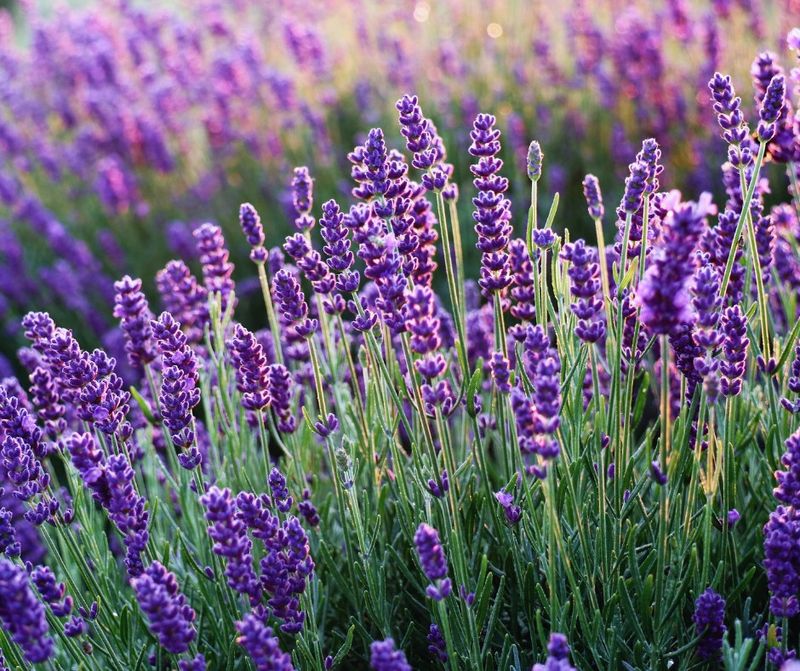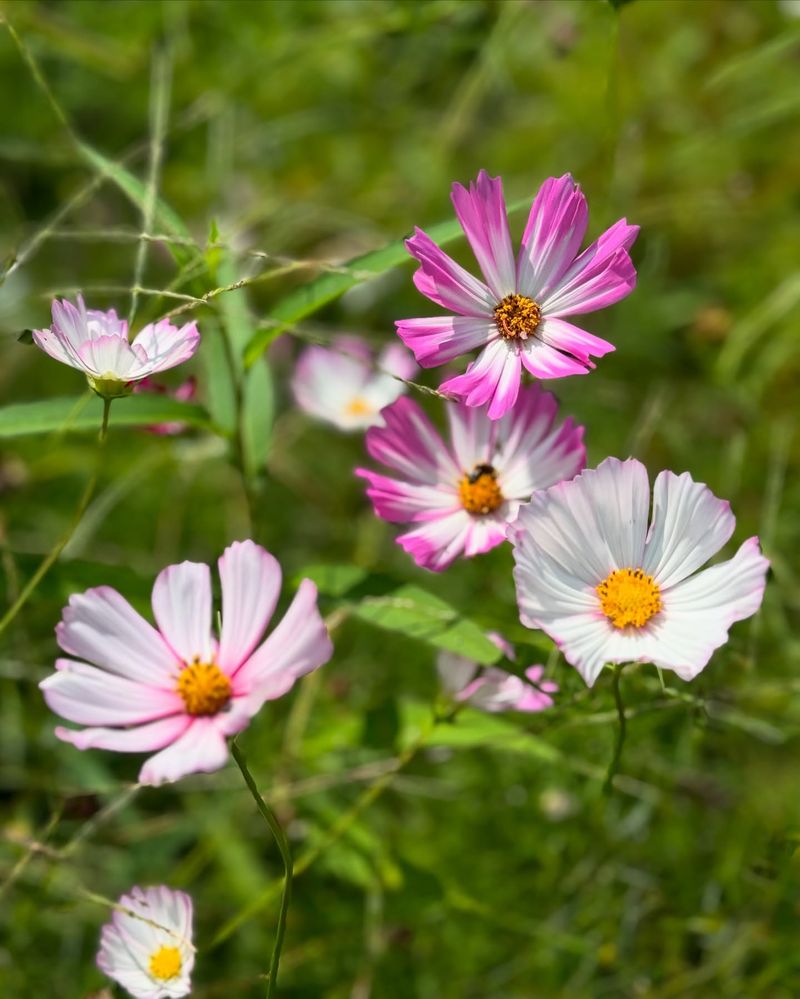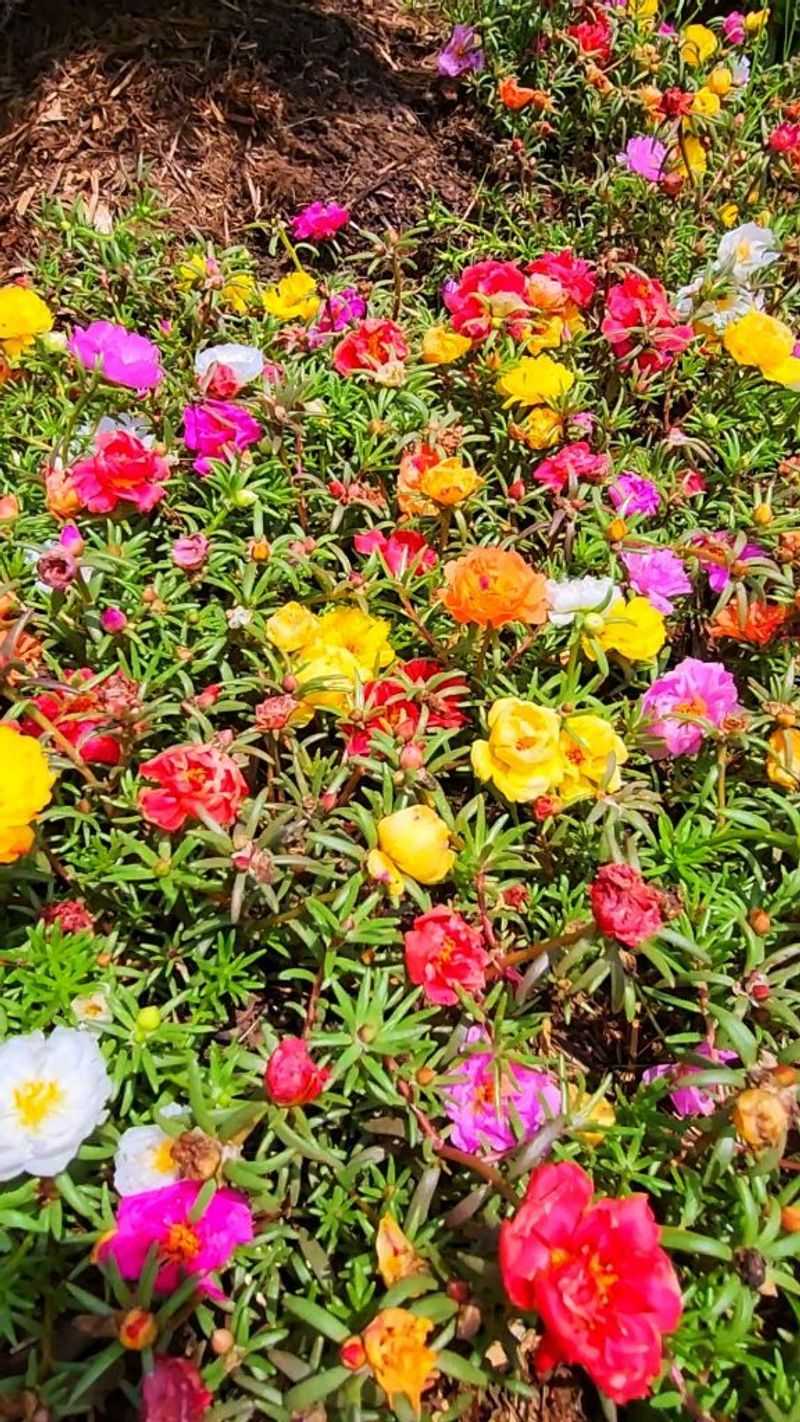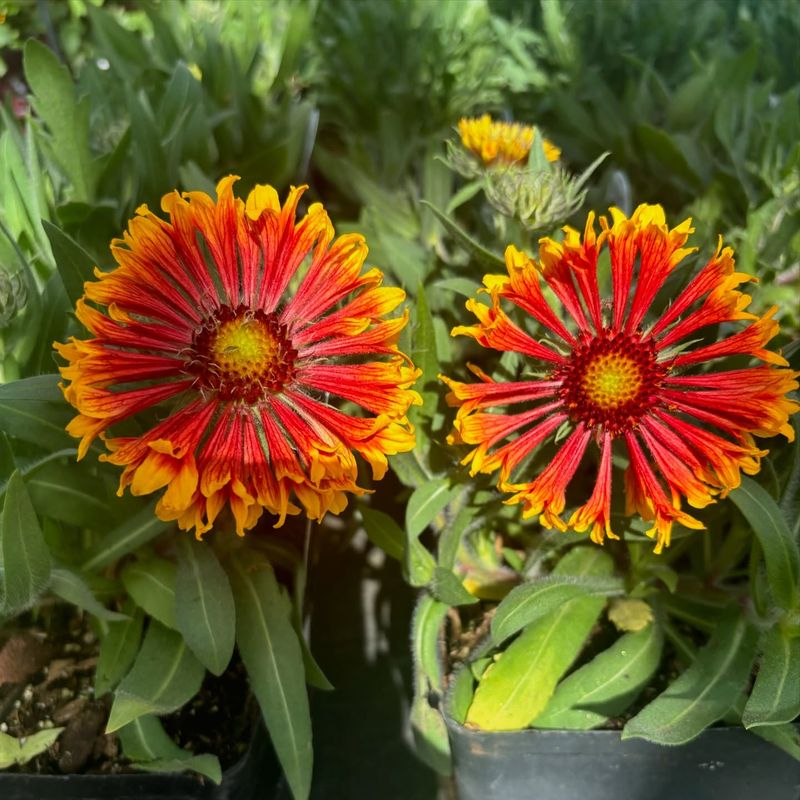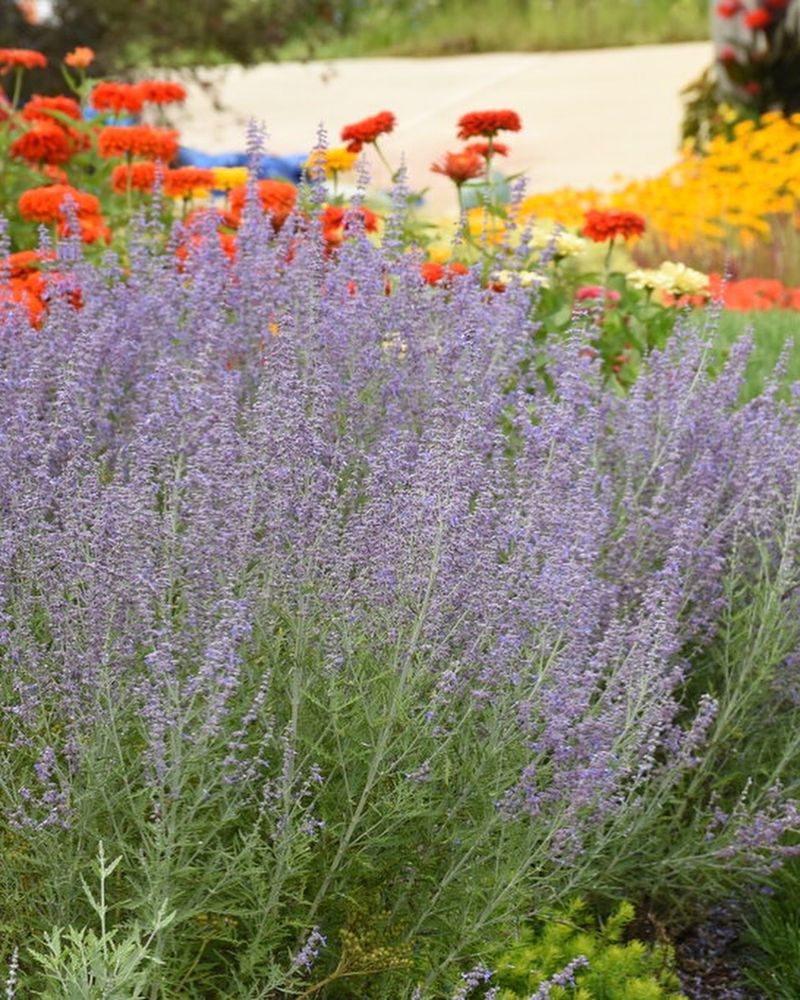Picking the right flowers for your garden can make all the difference between a thriving display of color and a disappointing flop. Some blooms simply demand sunshine to reach their full potential. If you’ve got a sunny spot in your yard, these sun-worshipping flowers will reward you with spectacular blooms, but try to plant them in shade and they’ll struggle or fail completely.
1. Sunflowers: The Ultimate Sun Seekers
Sunflowers track the sun’s movement across the sky, a behavior called heliotropism. Their tall stalks and massive blooms need direct sunlight for at least 6-8 hours daily to develop properly.
Without adequate sunshine, sunflowers grow weak, spindly stems that can’t support their heavy heads. They’ll also produce fewer seeds and smaller flowers.
For best results, plant sunflowers in an open area with well-draining soil. Keep them away from walls, trees, or structures that cast shadows during the day.
2. Lavender: Mediterranean Sun Lover
Native to the sunny Mediterranean region, lavender craves intense sunlight and struggles in shady conditions. The aromatic oils that give lavender its signature scent develop best under full sun exposure.
When grown in shade, lavender plants become leggy and produce fewer flowers. The stems stretch toward any available light, creating an unattractive, sprawling appearance.
Lavender also needs well-draining soil to prevent root rot. Combining poor drainage with insufficient sunlight is a sure recipe for lavender failure.
3. Black-Eyed Susans: Sunshine Yellow Blooms
Black-eyed Susans dazzle with their golden-yellow petals and distinctive dark centers. These native wildflowers naturally grow in open meadows where they receive abundant sunshine throughout the growing season.
Plant them in shade, and you’ll get fewer flowers, weaker stems, and plants that flop over easily. The signature bright yellow color may also appear duller in low-light conditions.
For a spectacular display, group several plants together in a sunny border or meadow garden where they can receive at least 6 hours of direct sunlight daily.
4. Zinnias: Colorful Sun Worshippers
Zinnias burst with vibrant colors from summer until first frost, but only when given plenty of sunshine. These Mexican natives evolved in sunny, hot conditions and simply won’t perform well without adequate light.
Shade-grown zinnias develop elongated stems as they stretch toward light sources. The flowers will be smaller and fewer, and the plants become more susceptible to powdery mildew and other fungal problems.
Space zinnia plants properly in full-sun locations to promote good air circulation and reduce disease issues while maximizing flower production.
5. Coneflowers: Prairie Sun Seekers
Coneflowers (Echinacea) evolved in the open prairies of North America where sunshine is abundant. Their distinctive cone-shaped centers and drooping petals need full sun to maintain their characteristic form and vibrant colors.
When planted in shade, coneflowers grow tall and lanky as they reach for light. The stems become weak and unable to support the flower heads properly. Bloom production decreases dramatically.
Drought-tolerant once established, coneflowers combine beautifully with other prairie natives like black-eyed Susans and ornamental grasses in sunny perennial borders.
6. Roses: Sun-Soaking Beauties
Most rose varieties demand at least 6 hours of direct sunlight daily to produce their stunning blooms. Morning sun is particularly important as it helps dry dew from the leaves, reducing fungal disease problems.
Roses grown in shade develop fewer flowers and produce smaller blooms with less vibrant colors. They also become more susceptible to blackspot, powdery mildew, and other common rose diseases.
Even so-called “shade tolerant” roses perform much better with several hours of direct sunlight. If your garden lacks sunny spots, consider containers that can be moved to catch maximum light.
7. Marigolds: Sunshine Orange Pom-Poms
Marigolds showcase cheerful orange, yellow, and red blooms that brighten any garden. Native to Mexico and Central America, these annual flowers evolved to thrive in hot, sunny conditions.
Without enough sunlight, marigolds grow leggy and produce fewer of their characteristic pom-pom blooms. The plants become more susceptible to diseases like botrytis, which causes flowers to rot.
As a bonus, marigolds planted in full sun develop stronger concentrations of the compounds that give them their distinctive scent, which helps repel certain garden pests.
8. Cosmos: Delicate Sun Dancers
Don’t let their delicate appearance fool you – cosmos are tough Mexican natives that crave sunshine. Their feathery foliage and daisy-like blooms dance in summer breezes, creating a magical garden display.
Plant cosmos in shade, and they’ll stretch toward any available light. The stems become weak and spindly, often breaking in wind or rain. Flower production decreases dramatically in low-light conditions.
For best results, sow cosmos seeds directly in full-sun locations after danger of frost has passed. They prefer poor soil and actually bloom more profusely when not overfertilized.
9. Portulaca: Heat-Loving Ground Cover
Portulaca (moss rose) thrives in conditions that would kill other plants – blazing sun, poor soil, and drought. These low-growing succulents produce brilliant jewel-toned flowers that open in sunshine and close at night or on cloudy days.
Growing portulaca in shade is practically impossible. The plants need intense light to trigger flowering, and without it, they produce mainly foliage with few or no blooms.
Perfect for rock gardens, hanging baskets, or as colorful ground cover in hot, dry areas, portulaca will reward you with non-stop summer color in sunny spots.
10. Blanket Flower: Desert Sun Devotee
Blanket flowers (Gaillardia) bring the colors of desert sunsets to your garden with their red and yellow daisy-like blooms. Named for their ability to blanket an area with color, they’re native to North America’s sun-drenched prairies.
Without full sun, blanket flowers produce fewer blooms and develop weak stems that flop over. The vibrant colors that make them so attractive also fade in shade.
Drought-tolerant and heat-loving, blanket flowers make excellent companions for other sun-worshipping perennials like salvias and coneflowers in water-wise garden designs.
11. California Poppies: Golden State Sunshine
California poppies carpet hillsides with golden-orange blooms in their native habitat. These state flowers evolved to thrive in California’s sunny, dry conditions and simply won’t perform in shade.
The delicate cup-shaped flowers only open when the sun shines on them. On cloudy days or in shade, the blooms remain tightly closed, hiding their beauty from view.
Easy to grow from seed, California poppies self-sow readily in favorable conditions. Just scatter seeds in a sunny, well-drained spot and enjoy their cheerful display from late spring through summer.
12. Lantana: Butterfly-Attracting Sun Lover
Lantana explodes with clusters of multicolored flowers that transition through different hues as they age. Butterflies flock to these nectar-rich blooms, creating a living garden display.
A tropical plant native to sunny regions, lantana performs poorly in shade. Flower production decreases dramatically, and plants become more susceptible to pests and diseases when light levels are inadequate.
In northern gardens, grow lantana as an annual in containers that can be placed in the sunniest spots. In warmer zones, it makes an excellent drought-tolerant perennial for sunny borders.
13. Gazania: Sun-Opening Treasures
Gazanias display some of the garden’s most striking daisy-like flowers in bold colors with contrasting rings and spots. Native to South Africa, they’ve evolved a unique relationship with the sun.
The flowers only open when direct sunlight hits them – place gazanias in shade, and the blooms remain closed all day. Even light shade significantly reduces their ornamental value.
Perfect for hot, dry spots where other plants struggle, gazanias make excellent ground covers for sunny slopes or colorful additions to rock gardens where they receive maximum sunlight.
14. Yarrow: Prairie Sun Perennial
Yarrow’s flat-topped flower clusters stand tall above ferny foliage, creating architectural interest in sunny perennial borders. This tough native plant evolved in open prairies and meadows where sunlight is abundant.
When grown in shade, yarrow stretches toward light sources, creating weak stems that flop over rather than maintaining their upright form. The flower clusters become smaller and less vibrant.
Available in shades from white to yellow, pink, and red, yarrow attracts beneficial insects while deterring many garden pests. Its drought tolerance makes it perfect for low-maintenance sunny gardens.
15. Verbena: Non-Stop Sun Bloomer
Verbena rewards gardeners with masses of small, colorful flowers from spring until frost – but only when planted in full sun. These prolific bloomers need intense light to maintain their compact growth habit and continuous flowering.
Without adequate sunshine, verbena plants become leggy and produce far fewer flowers. They’re also more susceptible to powdery mildew and other fungal diseases in shady, humid conditions.
Available in upright and trailing forms, verbenas make excellent additions to sunny borders, containers, and hanging baskets where their cascading habit can be showcased to full advantage.
16. Russian Sage: Silver-Blue Sun Lover
Russian sage creates clouds of lavender-blue flowers atop silvery-gray foliage, adding both color and texture to the garden. Despite its name, it’s neither Russian nor a true sage, but it definitely demands sunshine.
A native of Central Asian steppes, Russian sage has evolved to thrive in hot, dry, sunny conditions. Without full sun, the plants grow floppy and produce fewer of their signature airy flower spikes.
Drought-tolerant once established, Russian sage combines beautifully with other sun-loving perennials like coreopsis, black-eyed Susans, and ornamental grasses in water-wise garden designs.
17. Celosia: Flame-Like Sun Worshipper
Celosia produces flame-shaped or brain-like flower heads in vibrant reds, oranges, yellows, and pinks. These unique blooms need full sun to develop their distinctive forms and intense colors.
Growing celosia in shade results in stretched, weak stems and smaller, less colorful flower heads. The plants also become more vulnerable to root diseases when light levels are inadequate.
Native to tropical regions of Africa and Asia, celosia loves heat as much as sunshine. For best results, wait until soil has thoroughly warmed before planting these striking annuals in your sunniest garden spots.
18. Angelonia: Summer Snapdragon Sun Seeker
Angelonia earns its nickname “summer snapdragon” from its upright flower spikes that resemble those of its cooler-season cousin. Unlike true snapdragons, however, angelonia thrives in summer heat – as long as it gets plenty of sunshine.
In shade, angelonia produces fewer flower spikes and loses its compact growth habit. The stems become elongated and weak as the plant stretches toward available light sources.
Available in white, pink, purple, and blue, angelonia makes an excellent thriller in container arrangements or mid-height addition to sunny borders where it blooms continuously from summer to fall.
19. Geraniums: Mediterranean Sun Classics
Garden geraniums (technically Pelargoniums) have been summer garden staples for generations thanks to their vibrant flowers and attractive foliage. Native to South Africa, they’ve adapted to thrive in hot, sunny conditions.
Without adequate sunshine, geraniums produce fewer flowers and develop leggy growth. The distinctive scent of their leaves also becomes less pronounced in shade.
While they can tolerate morning shade if they receive afternoon sun, geraniums perform best with at least 6-8 hours of direct sunlight daily. Their drought tolerance makes them perfect for sunny containers and window boxes.
20. Salvia: Hummingbird-Attracting Sun Lover
Salvias produce spikes of tubular flowers that act like hummingbird magnets in the garden. These sage relatives include both annual and perennial species, but all perform best in full sun.
When planted in shade, salvias grow tall and floppy rather than maintaining their upright form. Flower production decreases dramatically, disappointing both gardeners and hummingbirds.
Available in a rainbow of colors from red and purple to blue, pink, and white, salvias combine heat tolerance with drought resistance, making them perfect choices for sunny, water-wise gardens.



